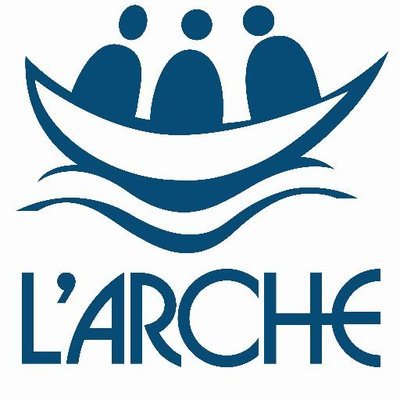what type of spaces do you want to see on the high street?
The Power of Norwood High Street: Public Space
Norwood High Street, London
Type | Digital month-long consultation
Client | London Festival of Architecture
Status | Completed June 2020
Collaboration | Station to Station, the West Norwood & Tulse Hill Business Improvement District
Publication | High Street Task Force
What types of programmes and new functions can we encourage on Norwood High Street that would promote different, relevant, adaptable and flexible new spaces along its length? What can we do about the existing empty high street shops? Is there a use other than commerce? Or do we focus on the street? If we explore landscape tactics to change the street will the buildings and shops naturally follow?
Open Discussion on Temporary Strategies
What did we do?
Alex Talbot is a lifelong Lambeth resident whose been a long time campaigner for better housing conditions in the borough. After time spent working in homeless, he made the transition to Local government and now works in the regeneration division at the London Borough of Croydon. Outside of work Alex volunteers for Christchurch CLT, a Community Land Trust attempting to deliver around 30 permanently affordable homes in Brixton Hill, as well as with Norwood Neighbourhood Planning Assembly.
In this open discussion, Alex explained why vacant premises are a problem for local communities and local authorities; how meanwhile spaces bring benefits to local authorities and what the challenges are. He identified the amazing opportunity or ‘Ovarian Window’ that we have in West Norwood. In this discussion, Alex set the tone for how grassroots groups can help local authorities fund and deliver meanwhile strategies that will revitalise empty and vacant high street spaces.
Key Recommendations
1. Understand the value of high streets and how important they are to urban life.
2. Find out what drives commercial vacancy leading to abandoned and empty shops on the high street.
3. There is a strong case for improving Norwood High Street! West Norwood has the highest deprivation in the borough and has remained consistently deprived with little improvement as opposed to other Lambeth areas. The West Norwood and Tulse Hill Manual for Delivery (2017) highlights how this area has much higher levels of vacancy than anywhere else in London.
4. A ‘meanwhile space’ provides activity within a defined space, often left empty or vacant, that is inherently temporary, occurring in a time between two more permanent uses. Meanwhile spaces are not necessarily short-term and can become ‘permanent’ very easily. They are beneficial to the Local Authority because they are: Efficient, Affordable, Multiplier effect, Flexible.
5. The BID and/or local stakeholders should try to compile a database to have a clear picture of what is driving vacancies in west Norwood (and all of Lambeth). This can be fed into evidence base for planning, both for informing the Local Plan Review but also future SPDs.
6. The BID and/or local stakeholders should develop a regeneration framework for the area, helping to strategically classify sites suitable for meanwhile and aid tenants in preparing a ‘tenant business plan’ to the local authority.
7. The BID and/or local stakeholders should actively match prospective tenants with potential properties, thinking about specific requirements and ability to generate revenue for the Creative Sector and provide Co-Workspace etc.
8. Local Authorities should try to manage poor quality commercial to residential conversions by using Article 4 as a way to block the use of Permitted Development rights within certain spaces within the borough.
9. Local Authorities should not neglect legal powers to force remedy, force sale or Compulsory Purchase empty (abandoned) sites.
Roundtable with Landowners
What did we do?
The aim of this roundtable was to explore alternative ways of developing key sites in the KIBA (Norwood Works) and aloang the Norwood High Street that is in keeping with Local policy, that protects existing local artists and simultaneously provides attractive development opportunities. To give a new focus to this discussion, this roundtable aimed to highlight key precedents from the demonstrably successful regeneration which has transformed Hackney Wick and find transferable lessons that can be applied to Norwood Works and Norwood High Street.
Invited to this landowner’s roundtable were two guest speakers that made a short introduction into the creative regeneration already delivered in Hackney Wick and enabled by the Community interest Group (CIG) ‘Creative Wick’.
Key Recommendations
1. Urban Change can only happen through collaboration.
2. The amazing COVID-19 reaction has happened due to social resources inherent in existing communities and across institutions, stakeholders and existing networks that made coordinating, funding and action possible.
3. The key to unlocking successful regeneration is in finding what communities find key in their neighbourhood and unlocking local knowledge. How to do this? Through character appraisal and a local audit.
4. Social heritage is the anchor of a place: what gives SE27 the soul? Understanding what the area is known for and pitching it to the local authority will help support the argument of turning the Key Industrial Business Area (KIBA) and Norwood High Street into a ‘creative enterprise area’.
5. Creative regeneration and placemaking is very popular and developers want to tap into this, but they don’t know how. A Community Interest Company (CIG) helps mediate between developers and local stakeholders and is a key collaboration.
6. Establish an ambition that is easy to buy into. For example, in Hackney Wick this was “a permanent sustainable creative economy”. The ambition has to be of local interest that tap into local values, making it easier to sell on.
7. Artists are the vanguard of regeneration and gentrification.
8. To have a genuinely mixed-used creative economy you need to protect the fine artists who are the most vulnerable.
9. The Hackney Wick Community Interest Company called ‘Creative Wick’ managed to create a red line protected area around Hackney Wick Central where ‘any development has to make sure there is no net loss of creative workspace’.
10. Importantly, the affordability has to be protected in perpetuity in order for it to be ‘truly sustainable’.
Workshop for Residents with Learning Difficulties
What did we do?
L’Arche is a registered charity that offers high quality, person-centred support for adults with learning disabilities. Reflecting the diversity, uniqueness and differing needs of each person, some individuals are supported in their own homes for a few hours per week, while others are supported twenty-four hours a day in our assisted living services. One of L’Arche’s eleven centres across the UK is located 9-13 Norwood High Street and they held a virtual workshop as part of this consultation.
Adults with learning difficulties from the L’Arche centre participated in the consultation. L’Arche sent craft packs to their community with the high street drawings prepared by A Small Studio and an arts & crafts parcel. The adults were able to join a remote workshop and draw/collage their ideas as the L’Arche leaders helped with key prompts such as: what do we miss on the high street? Do you find it easy moving around on the high street? Is there anything you would like to add to the high street? What would you like the street to look like?
Some of the comments made by the adults with learning difficulties were: in the high street, the pavement is dangerous because of the cars; the pavement is too narrow to walk comfortably; the high street is scary because there are lots of people and lots of cars.
Activity for Children
What did we do?
West Norwood Feast is South London’s favourite community run market that takes place on the first Sunday of the month from April – December. It is a people powered market! Locally referred to as ‘FEAST’, this is a monthly community market in South London run entirely by volunteers from the local area.
In collaboration with Feast, Movers&Makers created an activity to engage with children designing their ideal Norwood High Street.
Explore more from The Power of Norwood High Street
Click LANDSCAPE to see the results from our Workshop for Secondary School Children, the Workshop for Residents with Learning Difficulties and the Landscape Webinar.
Click JOURNEY to see the results from a collaboration with urban ecologist Joanna Ferguson with whom we have developed a Bat’s Highway.
Click ACTIVITIES to see the results from our Poll, the Pecha Kucha and the Roundtable with Lambeth Council.














